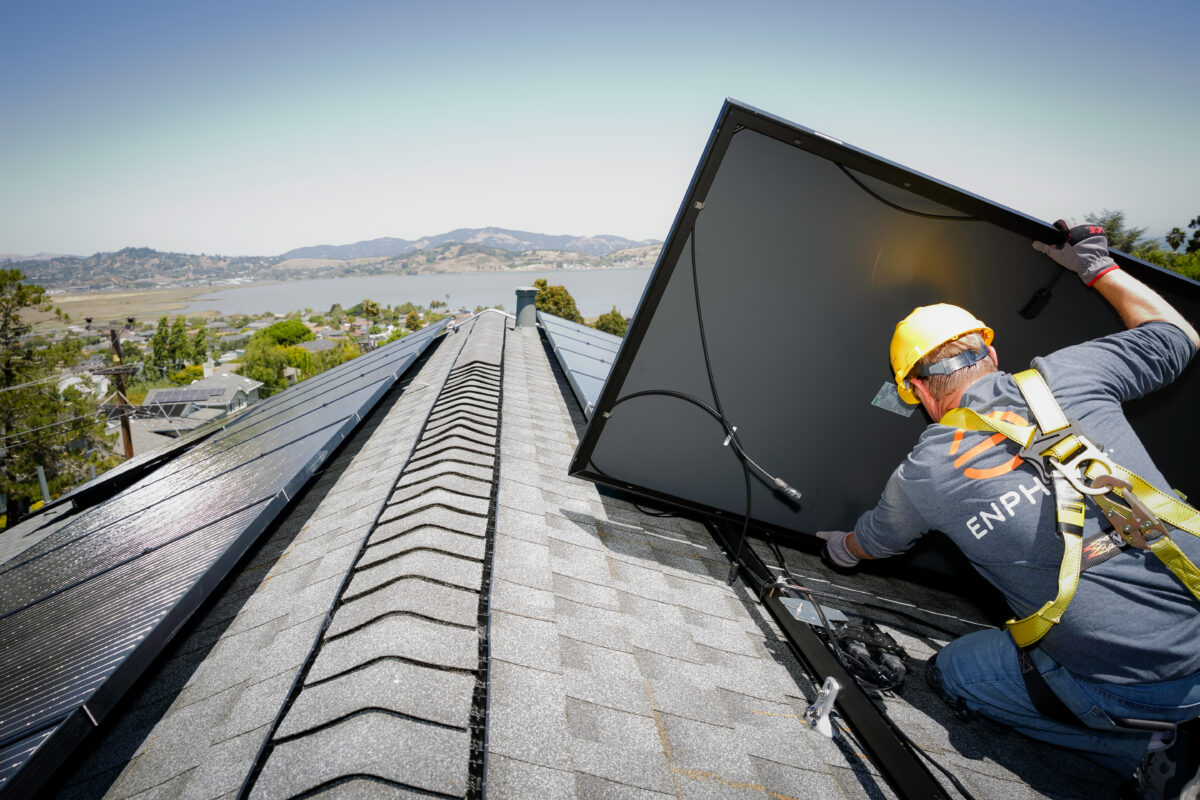Residential solar, energy storage, EV charging, and home energy management has had a bumpy ride this year, particularly both in the United States and in Europe. Demand has fallen sharply, reeling from policy changes like the transition to net metering in California, utility rate changes in Europe, and macro conditions like high interest rates.
Publicly traded solar stocks have plummeted in 2023, particularly in the residential sector, and Enphase has been no exception to this trend. The Invesco Solar Exchange Traded Fund is trading down 35% year-to-date.
“However, we could be starting to see some of the bottom,” said Raghu Belur, co-founder and chief of products at Enphase Energy in an interview with pv magazine USA.
He said that California’s market may be a quarter or two from reaching the bottom trough in demand, and Europe has started to stabilize and clear out channel inventories. France, in particular, is showing market strength, while countries like Netherlands and Germany have had modest recovery from recent demand implosion.
“I feel that 2024 will be a year of recovery,” said Belur. “I don’t see the market getting worse, but I don’t see it getting dramatically better. We won’t be back to the 2022-type growth. That will probably take an extra year. But 2024 you see things starting to turn around and slowly recover.”
pv magazine USA asked Belur about his outlook for the California market, which often serves as a waypoint for other U.S. states as a more matured market. Recent data from California interconnection queues has shown that the state, which is responsible for roughly 40% of the U.S. solar market, has seen demand fall off a cliff. Installations have dropped 80% since NEM 3.0, and over 17,000 jobs have been lost to layoffs, said the California Solar and Storage Association (CALSSA).
While Enphase is a major player in the California market, it is a diversified global company, stands as the dominant global supplier of solar microinverters, and has expanded to be a full energy service provider, complete with storage, EV charging, and energy management software.
Belur recognized that it has been a difficult year for California rooftop solar but said he remains confident that financial fundamentals will win back customer demand. Under California’s NEM 3.0, what used to be a four-to-five-year payback period, or return on investment, for rooftop solar, is now about seven to nine years.
“But you’re buying a 25-year asset, so you’re still coming out way ahead,” he said.
He points to the financial fundamentals of rooftop solar, storage and EV charging. Interest rates are eventually going to come down, and meanwhile, utility rates are rising far faster than inflation. This is particularly true in California, where the Public Utilities Commission approved a 13% bump to electric utility rates in 2024. Couple these changing forces with diving solar module prices, and suddenly the payback period looks strong, and demand recovers.
While solar and storage shoppers typically use a rule of thumb of about 3% to 4% annual rate increases from the utility company to estimate long-term savings, Belur said this assumption no longer applies. “Double-digit rate hikes are common now,” he said.
Belur noted that adding energy storage to your home solar array serves as the ideal hedge against utility rate increases and policy changes like NEM 3.0. Enphase continues to introduce intelligent software that interacts with grid price signals, essentially turning your battery into an energy market broker.
In a follow-up interview with pv magazine USA, Raghu Belur will describe how Enphase’s residential solar-plus-storage and other supportive technologies are evolving to meet customer needs.
This content is protected by copyright and may not be reused. If you want to cooperate with us and would like to reuse some of our content, please contact: editors@pv-magazine.com.









Its not a 25 year asset for those of us with angry clients calling because Enphase 25 year warranty makes work replacing 10 year old M215s over and over. I’m ready to just tell clients to abandon Enphase so we can just do one replacement and have a competent hybrid inverter ready for batteries at the same time. We’re either building real power plants or not – vendors have to hold up their end.